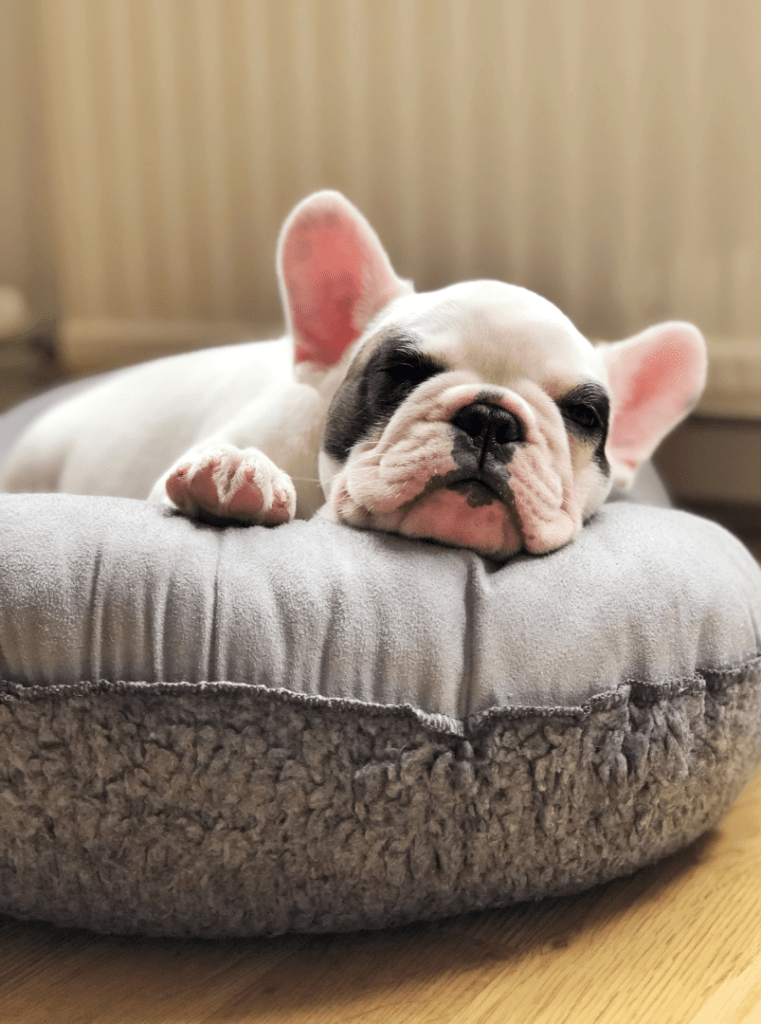Table of Contents
Do Dogs Dream?What Do Dogs Dream About?The Science Behind Canine SleepUnderstanding the Sleep Cycle of DogsObserving Your Dog’s SleepSigns Your Dog is DreamingShould You Wake a Dreaming Dog?The Importance of Quality Sleep for DogsHealth Benefits of Good SleepEnsuring a Comfortable Sleep EnvironmentFun Facts About Dog SleepHow Much Do Dogs Sleep?Sleep Positions and What They MeanConclusion
As dog owners, we often wonder what goes on in our furry friends’ minds when they sleep. Do they dream like humans? If so, what do they dream about? This blog post aims to unveil the mysteries of canine sleep, exploring scientific insights and shedding light on what your dog might be experiencing during those peaceful slumbers.
Do Dogs Dream?
The short answer is yes, dogs do dream. Studies have shown that the brain activity of sleeping dogs is remarkably similar to that of humans, particularly during REM sleep. According to Dr. Stanley Coren, a professor of psychology and a well-known canine expert, dogs experience dream cycles just like we do. Puppies and older dogs tend to have more frequent REM sleep, which means they dream more often.
What Do Dogs Dream About?
While we can’t know for certain what dogs dream about, it’s likely that their dreams are influenced by their daily activities. For instance, a dog who loves chasing squirrels might dream of running through the park, while a dog who enjoys cuddling might dream of snuggling with their favorite human.
The Science Behind Canine Sleep
Understanding the Sleep Cycle of Dogs
Dogs, much like humans, go through different stages of sleep. These stages can be broadly categorized into Rapid Eye Movement (REM) sleep and Non-Rapid Eye Movement (NREM) sleep.
REM Sleep: This is the stage where most dreaming occurs. During REM sleep, dogs’ brains are highly active, and you might notice their eyes moving rapidly under their eyelids. This is often accompanied by twitching paws, wagging tails, and even soft barks or whimpers. Research suggests that REM sleep is essential for cognitive functions, including memory consolidation and learning, indicating that dogs dream just like humans.
NREM Sleep: Also known as slow-wave sleep, this stage is characterized by deep, restorative sleep. During NREM sleep, bodily functions slow down, allowing the body to repair and grow. This stage is crucial for physical recovery and overall health, ensuring that dogs dream vividly during their rest periods
Observing Your Dog’s Sleep
Signs Your Dog is Dreaming
To determine if your dog is dreaming, watch for signs such as:
Twitching: Small movements of the paws or facial muscles.
Vocalizations: Soft barks, whines, or growls.
Rapid Eye Movement: Eyes moving quickly beneath closed lids.
Body Movements: Subtle, repetitive movements like paddling of the legs.
These behaviors typically occur during REM sleep and indicate that your dog is likely dreaming.
Should You Wake a Dreaming Dog?
It’s generally best to let sleeping dogs lie. Interrupting a dog’s dream can startle them and cause disorientation. If your dog seems distressed during a dream, gently calling their name can help soothe them without fully waking them. Letting dogs dream peacefully is important for their mental and emotional well-being.
The Importance of Quality Sleep for Dogs
Health Benefits of Good Sleep
Quality sleep is vital for your dog’s health and well-being. It helps with:
Memory and Learning: Proper sleep aids in memory consolidation and learning new commands or tricks.
Physical Health: Sleep is crucial for physical repair, growth, and immune function.
Emotional Well-being: Adequate rest can reduce anxiety and improve overall mood, showing that when dogs dream, it positively affects their emotional health.
Also read,
Ensuring a Comfortable Sleep Environment
To promote good sleep for your dog:
Provide a Comfortable Bed: Ensure your dog has a cozy and supportive bed. Consider beds that offer orthopedic support for older dogs.
Establish a Routine: Consistent bedtime routines help regulate your dog’s internal clock.
Reduce Noise and Light: Create a quiet and dim sleeping environment.
Fun Facts About Dog Sleep
How Much Do Dogs Sleep?
Dogs typically sleep 12-14 hours a day, with puppies and older dogs requiring even more rest. This is significantly more than the average human, reflecting their need for more recovery time due to their active lifestyles. For a deeper insight into the sleeping needs of dogs, and why that rest is so crucial, Forbes provides a comprehensive guide on how much sleep dogs should be getting based on their age and activity levels. This resource can help you ensure that your furry companion is getting the rest they need.
Sleep Positions and What They Mean
Curled Up: This position conserves body heat and protects vital organs. Dogs who sleep curled up are often more anxious or protective.
On Their Side: Indicates a relaxed and comfortable state. Dogs feel safe and secure in this position.
Sprawled Out: Suggests a dog is very comfortable and at ease in their environment. It also helps them cool down.
Conclusion
Understanding your dog’s sleep can deepen the bond you share and help ensure they lead a happy, healthy life. Next time you see your dog twitching in their sleep, you can rest assured knowing they are likely dreaming of their favorite activities. Dogs dream just like we do, and ensuring they have a good sleep environment is crucial for their overall well-being.
For more insights on canine care and to ensure your dog receives the best grooming and boarding services, visit Dog House Dubai. Our professional team is dedicated to providing top-notch care, ensuring your furry friend enjoys sweet dreams every night.
